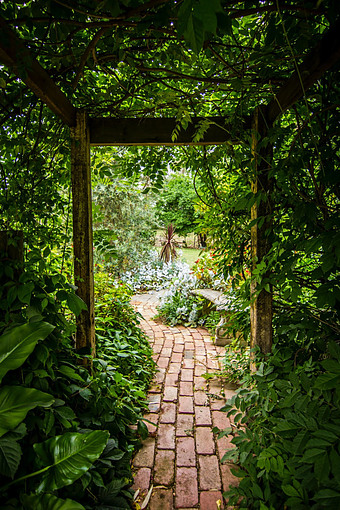Suitable and attractive paths must be laid between the beds, so all garden path ideas could be helpful simply because more people know more.
A well-designed and well-kept vegetable garden will attract attention, arouse satisfaction, and entice us to happily spend part of our free time in the garden – either with a cup or a book, with a watering can or with a basket in hand, alone or in the company, vertically or horizontally.
Garden Path Ideas for Improving the Quality of Living
At the phrase vegetable garden, many people first think about how they will arrange the beds. Several options exist, from the most well-known classic beds to the increasingly common raised beds with flat tops, mounded beds, and terraced spiral beds. Last but not least, the garden can also be arranged in such a way as to plant plants in containers and troughs. But garden beds are not the only element of the garden. This time the word will not be about them but the paths, one of the equally essential garden elements with which we co-design the space. Garden paths are often initially forgotten when designing vegetable gardens. Only later do we see how beneficial their arrangement and placement in the space would be, especially from a practical but also an aesthetic point of view. With appropriate, well-thought-out placement and performance of paths and other garden elements, we can significantly improve the quality of living. In this way, we avoid many inconveniences, make our work more accessible, and arrange the space that we function as well as possible in the garden and feel good.
Starting Points for Garden Path Ideas
For a person to get from the starting point to the desired point in space, he most often uses the shortest route. If this is not available to him, he soon creates his own path in the space, or it is created anew as a result of more people walking along this path, which can be quickly observed in parks and other green areas. These are situations where green areas represent intermediate areas on the way to the destination. Still, it does not apply to cases where, for example, we purposefully go for a walk in the park, in which case we will usually walk along well-maintained paths. The same applies to the garden. So, when planning paths in the garden, it makes sense to take this into account and ask ourselves whether we want to have paths placed in such a way that we can get to the desired vegetables, compost bin, and garden tools as quickly as possible, or whether we will use the paths for walking between the flower beds. In the first case, we will plan the routes in accordance with the aforementioned behavioral pattern. In contrast, in the second case, we will be able to let the imagination run freer and place the paths in a space with a little more design freedom.
Garden Path Ideas Regarding a Variety of Materials
After we have decided what our garden or part of the garden will primarily be used for and we have planned the course of the path in the space accordingly, it is time to think about what we will make the path out of, which material or combination of materials we will use. The choice is vast, and more parameters can be taken into account. What we choose in the end depends on what we prioritize: Is the aesthetic harmony of the path and the garden with the house vital to us, perhaps ease of maintenance, the durability of the material, or even simplicity of execution or price advantage? When deciding on the material to use, you take a broader view and choose a material that will connect your garden with the house, perhaps even the surrounding landscape. Above all, where the influence of the landscape is more pronounced, it is necessary to consider the landscape’s characteristics and use materials typical of the local environment.
Permanent and Short-Term Garden Paths
Gravel and sand are materials that can be used to arrange paths easily and quickly. It is a versatile, natural-looking material that suppresses weed growth, retains moisture, improves drainage, and does not disintegrate (like bark, wood chips, and straw). Walking barefoot on sand or fine gravel has a massaging, relaxing effect. Maintenance is simple so that the sand is scooped into its place every now and then. Due to movement underfoot, it is also an excellent idea to border such paths with curbs, preventing them from being washed away during downpours. When walking, the sand digs into the ground slightly, so we replenish it with new sand every four years. Using a waterproof fabric as an intermediate layer between the soil and sand, gravel, or bark is recommended.
Bark or wood chips as a material are not permanent, so a new thin layer is added to such paths every spring to replace the bark or wood chips that have turned into hummus. It, therefore, acts as an organic fertilizer and, among other things, reduces temperature fluctuations in the soil. One of the highest-quality types of wood chips is pine wood chips. Paths in the garden can also be made from wooden planks and chocks, which are impregnated and thus extend their durability. Paths made of wooden chooks will surely delight children. The space in between can be filled with sand, grass, or, for example, thyme.
If we want durability and easy maintenance of the path, then we can lay natural stone, stone slabs directly in the ground or concrete, or opt for paving stones. With the mentioned materials, we can create utterly flat path surfaces. The variety of colors, sizes, and shapes offers us a wide range and enables the creation of different patterns.
